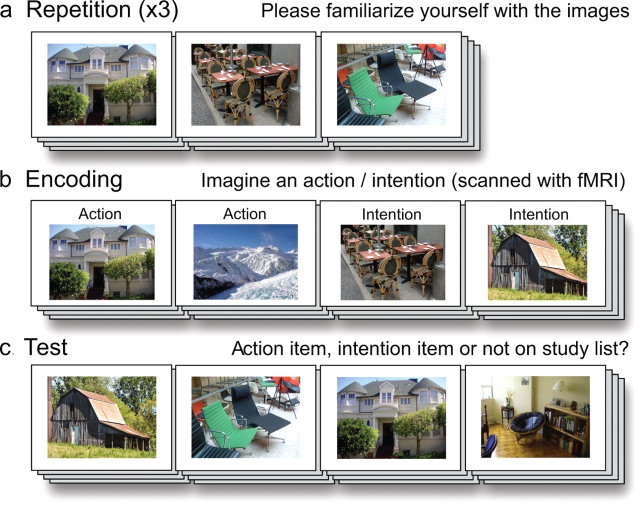Figure 1.
Schematic of experimental design. During the repetition phase (a), which took place immediately before fMRI scanning in a mock fMRI scanner, participants were exposed to one set of scenes three times. During the encoding phase (b), which took place in the fMRI scanner, participants viewed the repeated scenes and a novel set while imagining themselves performing an action in the scene or imagining a possible intention associated with the scene. In a subsequent memory test outside of the scanner (c), participants were presented with all of the scenes from the encoding phase along with additional lures, some of which had been presented in phase 1 but not during scanning (repeated lures), and some of which had not previously been presented (novel lures). They were asked to determine whether each scene was presented during scanning and, if so, whether it was associated with action or intention instructions.

